How To Draw An Isometric Grid By Hand
To celebrate all of your support for our showtime Kickstarter, to [icon], nosotros've decided to share with you some of the techniques behind the icons. In this example we will study the methods behind the all-demanding Isometric icon. The goal of this tutorial is to introduce you to the basics of isometric sketching in Illustrator CC (without the fancy 3D extrusion features).
By the end of the tutorial you should:
- Know some fundamentals virtually isometric drawing
- Be able to fix up an isomeric grid on art boards
- Be able to brand kicking ass isometric cubes
- Be able to extrude and cutaway details
Know Thy Axis
If you didn't know it already, to actually get into the isometric sketching y'all will take to deal with the 10, Y, and Z centrality. Anything drawn on your isometric filigree, which is at lx caste angles to itself, volition not actually take a front face or bottom face. What this means is that whatever you choose to sketch volition have at least ii sides visible in addition to the top face. Note that even if the object is hollow or has no superlative you might be dealing with an object that has 4 to 5 sides partially visible.
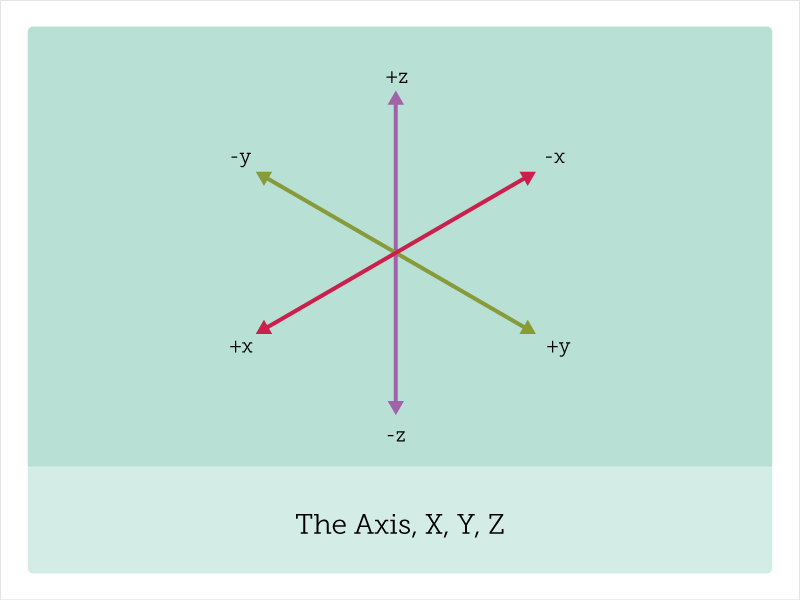
1. Some Prep
Simply for my own peace of mind. Commencement off potent with some .ai hygiene. Start a new layer and characterization it guides.
2. Make the Z lines
Make your Z axis first. Draw a line and, using transform, align information technology to a full pixel value on the X and Y. Now with a elementary Option-Shift-D you can drag to duplicate information technology. Once you have your get-go re-create you can ⌘-D to echo that until yous get as many verticals as you need to comprehend your artboard. Keep it make clean, so Grouping them, Ctrl or ⌘-G.
Tip: If yous want to align your lines farther to a specific value afterward that, say 20px, select all of your Z axis lines and in the Align console select align to pick, click on the first line yous made, and enter "20px" in Distribute Spacing. To set up information technology, striking the horizontal distribute push.
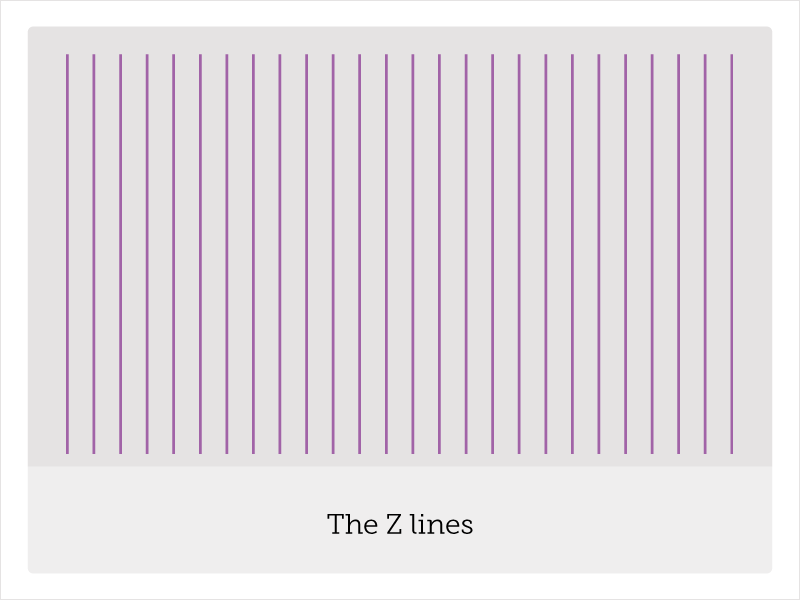
iii. Make the Y lines
Duplicate your freshly made Z lines–re-create, paste basically. I'm not going to give y'all the shortcuts for that. Rotate them sixty degrees, and adjust the length to comprehend the artboard. These will soon be your Y-centrality guides. I've trimmed these, but you can leave them as they are. What's important is that they are there.
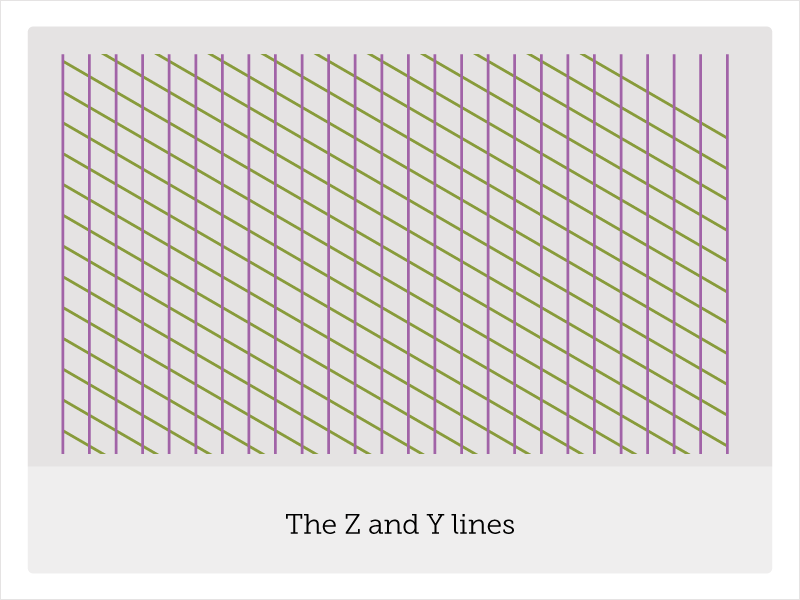
iv. Make the X lines
Duplicate your Y axis lines. Copy and Paste these in place ⌘-Shift-V. While they are still fresh and still selected, then go to Transform > Reflect > Horizontal. These will be your Ten-centrality guides. I've trimmed these, only you can leave them as they are. You may have to nudge re-marshal them (Shift motion up or downwards) to make the proper isometric box pattern.
Tip: If you desire to utilise these to multiple artboards like I did, Copy and Paste on all artboards (⌘-Shift-Option-Five).
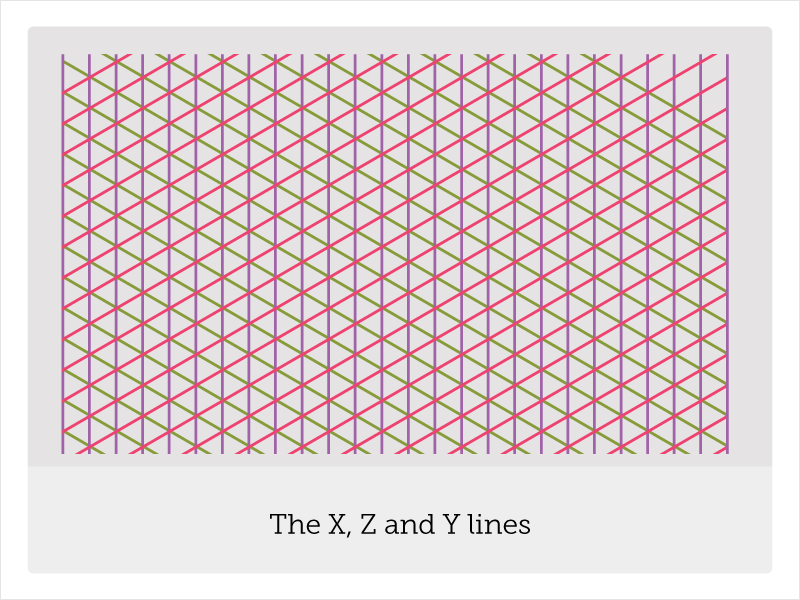
five. Convert to Guides
Fix? Ok. Select all your lines and go to View > Guides > Make Guides. Your lines should get cyan, and officially exist guides. At present if you press ⌘ and ; together, those guys should toggle on/off. Now yous tin can commencement building things, and snapping to them.
I use guides by and large for extruding and double checking my alignment. If you have aligned your original lines, with a bit of luck with Snap to Grid and Snap to Point on, you can sketch straight on pinnacle. Yous may need to double bank check that your spacing between the guides and your grid match.

6. Sketching
As I mentioned earlier anything you will describe in an isometric view will take a left, correct, and acme face. So you will have to design all three sides, if non more.
I tend to make these all at the same fourth dimension. Making certain the heights and widths line up. I usually start with the left view (my forepart) and so indistinguishable that and resize to make sure everything lines up.
Then I squish, skew, and spin all of the sides to make them isometric. Take a wait at the examples.
Tip: Option-elevate of the chief shapes makes sure the values match upwardly across the different sides.
UPDATE: Cheers to Aram Mirzoyants for pointing out 86.603% will result in a close-to-perfect match when assembling.
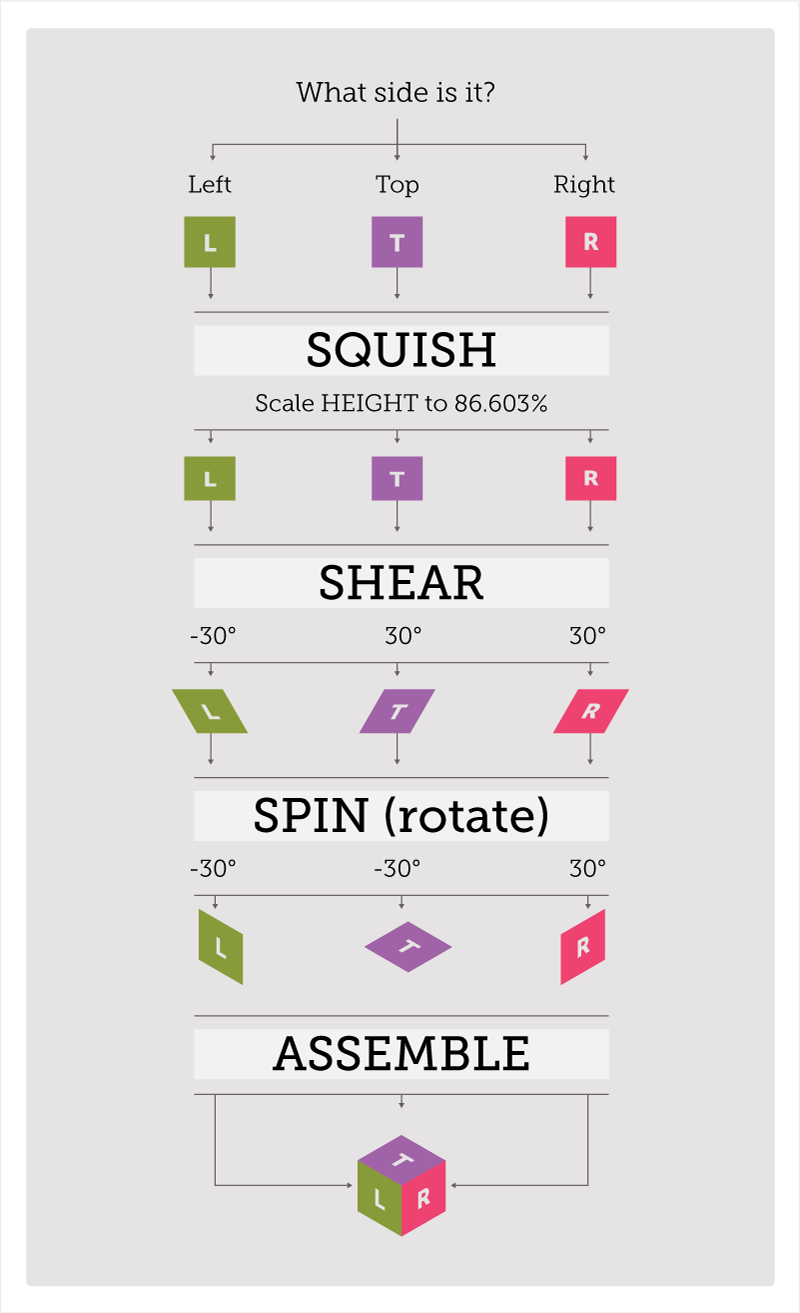
Open question to the crowd: has anyone suceeded with building Isometric Deportment in Illustrator? The ones I've attempted only work if all or your heights, depths and widths are consistent, meaning one longer edge and all is lost. The actions don't seem to like re-calculating percentages on case-by-case basis, meaning it messed everything up pretty fast with a range of sizes. I retrieve it'south the percentage that throws it off. Does anyone take a piece of work around for this?
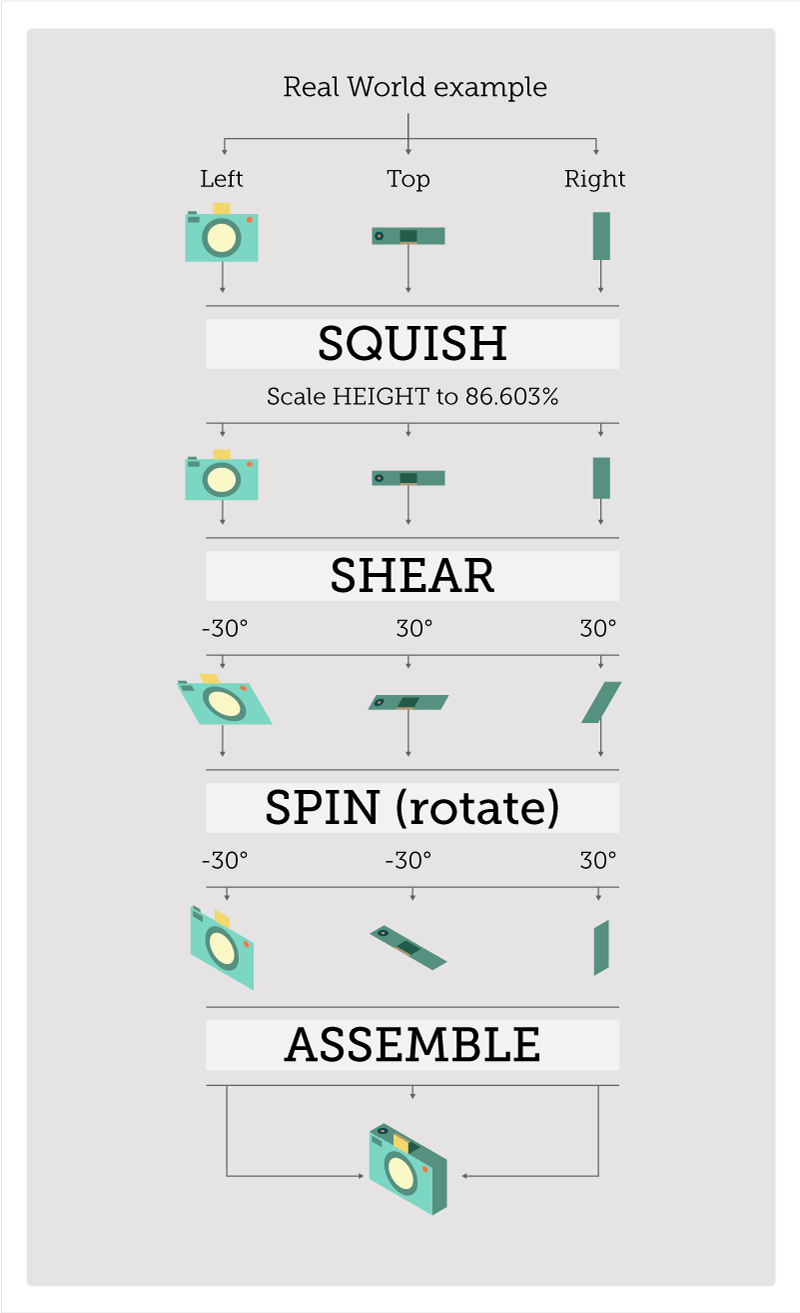
6. Adding Depth (a.1000.a. making information technology sexy)
Calculation depth is unfortunately a bit hitting and miss at the beginning, but a flake of do goes a long style.
My technique is to copy and paste in place (⌘-Shift-V) parts I want to extrude or embelish. Then I move the copied object forwards or back using the sixty degree bending guides. I then employ Pathfinder to Boolean 'unite' or 'minus front' to create protrusions or cutaway holes.
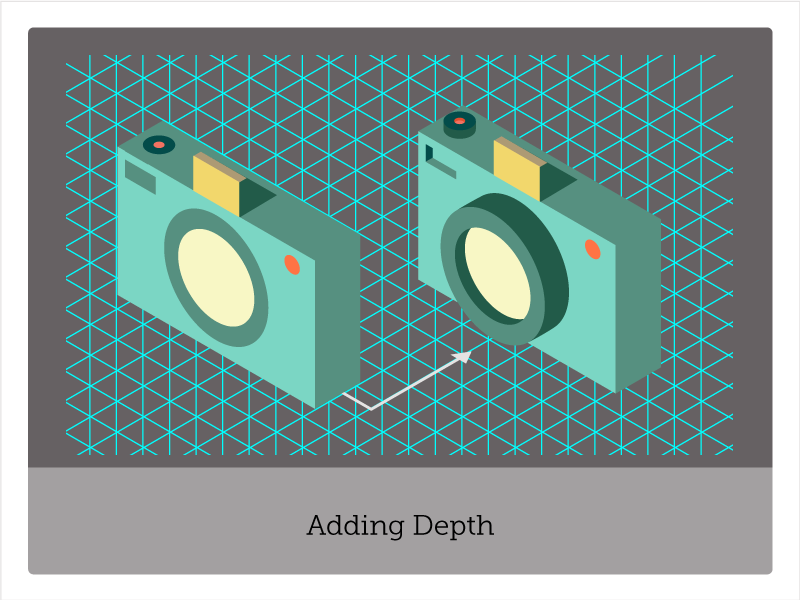
Have a expect at the video for how I bargain with cylinders and round amorphous shapes. The concluding stride is calculation color for some popular.
Source: https://artificial.design/archives/2014/04/23/isotute.html
Posted by: davidsonmushe1960.blogspot.com


0 Response to "How To Draw An Isometric Grid By Hand"
Post a Comment